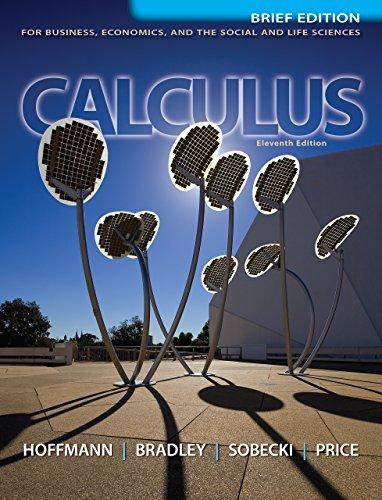A machine based on wind energy generally converts the kinetic energy of moving air to mechanical energy
Question:
A machine based on wind energy generally converts the kinetic energy of moving air to mechanical energy by means of a device such as a rotating shaft, as in a windmill. Suppose we have wind of velocity v traveling through a wind-collecting machine with cross-sectional area A. Then, in physics* it is shown that the total power generated by the wind is given by a formula of the form
P(v, A) = abAv3
where b = 1.2 kg/m3 is the density of the air and a is a positive constant.
a. If a wind machine were perfectly efficient, then a = 1/2 in the formula for P(v, A). How much power would be produced by such an ideal windmill with blade radius 15 meters if the wind speed is 22 m/sec?
b. No wind machine is perfectly efficient. In fact, it has been shown that the best we can hope for is about 59% of ideal efficiency, and a good empirical formula for power is obtained by taking a = 8/27. Compute P(v, A) using this value of a if the blade radius of the windmill in part (a) is doubled and the wind velocity is halved.
Step by Step Answer:

Calculus For Business, Economics And The Social And Life Sciences
ISBN: 9780073532387
11th Brief Edition
Authors: Laurence Hoffmann, Gerald Bradley, David Sobecki, Michael Price





